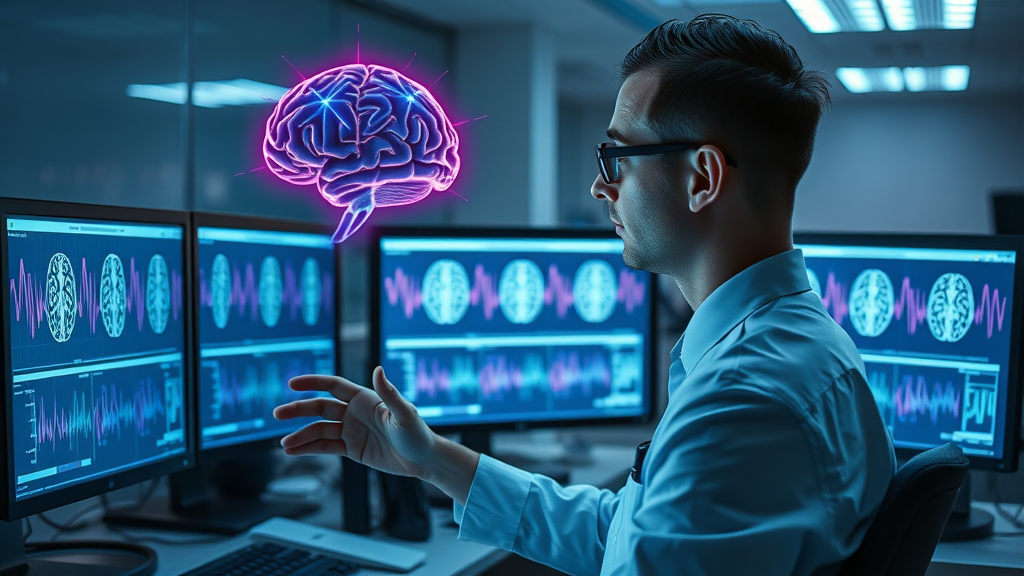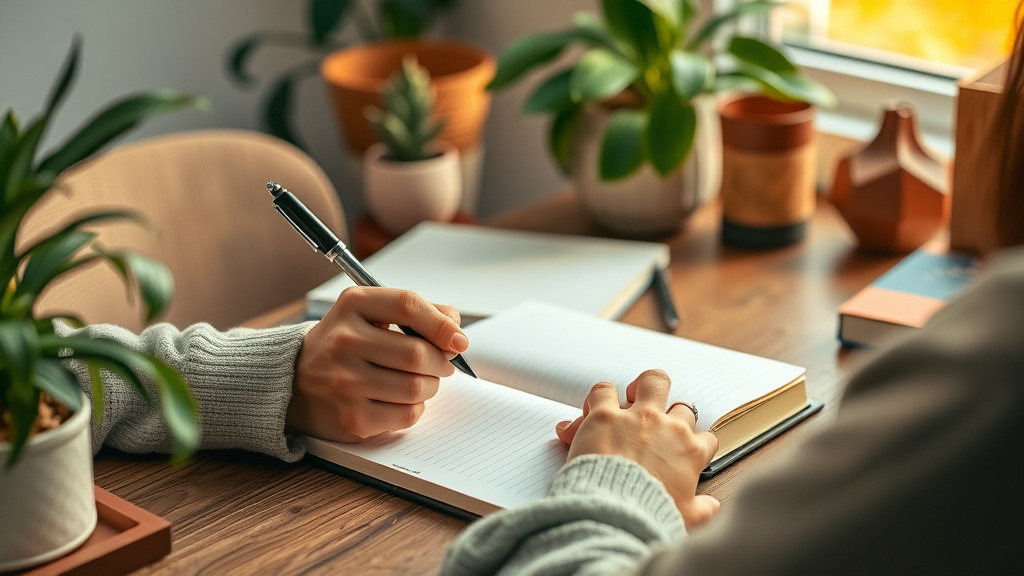
Did you know? Over 70% of people who attend neurofeedback sessions report noticeable improvements in their mental health within just a few weeks of training. This startling fact highlights why neurofeedback is emerging as a science-driven, non-invasive solution for optimizing brain function, treating conditions like ADHD, anxiety, and depression, and enhancing everyday performance . In today’s comprehensive guide, you’ll find everything you need to know about modern neurofeedback, from the initial consultation to advanced brain training protocols—so you’ll know exactly what to expect and how to benefit.
Did You Know? Over 70% of People Who Attend Neurofeedback Sessions Report Noticeable Improvements in Their Mental Health
For many, the journey to improved mental health starts with neurofeedback sessions that combine the latest advances in brain training with decades of scientific research. Participants consistently report a reduction in symptoms such as anxiety, attention deficits, and sleep problems after a series of feedback sessions . This is largely because modern neurofeedback sessions are highly personalized, rapidly evolving with real-time data from your brain activity.
It’s not just about addressing health conditions—these sessions support more comprehensive cognitive improvement by tuning your unique brainwave patterns. Whether you’re seeking relief from chronic pain, coping mechanisms for stress, or an edge in focus and performance, neurofeedback offers a pathway tailored to your goals. As the demand for effective, medication-free mental health interventions continues to rise, neurofeedback stands out as both accessible and evidence-based.
Understanding Neurofeedback Sessions: Unlocking the Science Behind Brain Training
Defining a Neurofeedback Session: What Actually Happens During a Feedback Session?
At its core, a neurofeedback session is a non-invasive, data-driven brain training experience. Clients sit comfortably while sensors are affixed to the scalp, measuring electrical activity caused by brain wave patterns. These sensors allow practitioners to monitor real-time changes in brain activity, such as shifts between beta waves (associated with focus), theta waves (linked to creativity or relaxation), and more.
Throughout the feedback session, you’ll receive subtle cues—like visual or auditory signals—whenever your brain is operating within targeted wave patterns. This instant feedback helps reinforce desired mental states, allowing you to learn how to self-regulate brain function over time. Modern neurofeedback sessions are comfortable, interactive, and designed to maximize engagement, whether your goal is managing anxiety, ADHD, or peak performance.
How Neurofeedback Training Works: The Role of Brainwaves, Sensors, and Real-Time Feedback
Neurofeedback training harnesses the power of brain-computer interface technology. During each training session , small EEG sensors capture the electrical activity generated by your brain. These signals are processed by specialized software, which identifies changes in your brainwave activity and translates them into actionable feedback.
As you interact with neurofeedback games or visual displays, you’re prompted to enter optimal brainwave patterns for focus, relaxation, or alertness—depending on your training goals. By receiving real-time feedback, your brain gradually learns to sustain beneficial activity, whether that means lowering stress-related beta wave surges or enhancing sustained attention through beta brain activity. The result? Long-term improvements in emotional balance, concentration, and even sleep quality.

Historical Evolution: How Neurofeedback Sessions Have Advanced in the Last Decade
The last decade has seen a revolution in neurofeedback therapy. Early neurofeedback sessions were often manual, using simple tone-based feedback to nudge the brain closer to desired states. Today, advanced technology makes use of machine learning, high-resolution EEG mapping, and gamified training programs that adapt in real time to your progress.
Now, clients benefit from sessions tailored to their unique brain pattern and mental health goals, with protocols updated dynamically alongside their progress. Additionally, integration with devices that track heart rate and mood brings a holistic perspective to each feedback session . This means quicker results, fully customized experiences, and broader accessibility for people of all ages and backgrounds. The incorporation of these innovations is why modern neurofeedback is considered both safe and highly effective by mental health professionals worldwide.
What You'll Learn from Modern Neurofeedback Sessions
- How neurofeedback sessions support mental health
- The neurofeedback training process step-by-step
- What conditions neurofeedback can treat
- Practical tips to maximize each session’s effectiveness
| Aspect | Traditional Neurofeedback | Modern Neurofeedback |
|---|---|---|
| Technology Used | Basic EEG, manual adjustment | High-definition EEG, AI-driven feedback, digital integration |
| Customization | General protocols | Personalized, based on unique brainwave patterns and mental health data |
| Feedback Format | Simple tones or flashes | Interactive software, real-time data visualization, gamification |
| Session Monitoring | Manual observation | Integrated heart rate, mood tracking, progress analytics |
| Accessibility | Limited to clinics | Widely accessible; home training kits available |
Step-by-Step Walkthrough: What Happens in Neurofeedback Sessions
The Initial Assessment: Setting Your Mental Health Goals
Every effective neurofeedback treatment protocol begins with a thorough, compassionate assessment. You’ll meet with a specialist to review your mental health history, current symptoms, and areas for improvement—whether it’s anxiety, chronic pain, attention deficits, or sleep issues. This conversation also includes baseline EEG recordings and sometimes cognitive assessments to capture your brain’s unique wave activity .
Establishing clear, achievable goals at this stage is crucial for personalizing your training. Whether you’re seeking performance enhancement, relief from a specific health condition, or a general boost to cognitive wellness, these objectives become the blueprint for all future sessions. This collaborative process supports trust, engagement, and measurable progress over time.

Customizing Your Treatment Protocol for Optimal Results
Once your baseline is established, your provider develops a treatment protocol specific to your brainwave patterns. Advanced software analyzes your electrical activity and tailors the training sessions to reinforce desired brain states. Clients with anxiety may focus on increasing alpha waves, while those with ADHD aim to boost beta activity for improved attention.
Brainwave training is supplemented by milestones and checkpoints—so your protocol evolves as your brain adapts. By continuously monitoring feedback, practitioners fine-tune session parameters, introduce new challenges, and ensure you’re always progressing toward your defined outcomes. This level of care distinguishes modern neurofeedback from other generic training programs or mental health interventions.
From Start to Finish: A Typical Training Session Explained
A typical neurofeedback session starts with you comfortably seated; EEG sensors are applied to measure real-time brain activity. The practitioner guides you through interactive exercises or games, each designed to elicit specific brainwave states. As you engage with the session, ongoing audio or visual feedback reinforces positive changes, like maintaining focus or relaxation.
Each training session lasts 30–60 minutes. Afterwards, you and your provider review performance data, discuss any sensations or thoughts, and make adjustments for subsequent visits. The process is seamless and non-intrusive, often leaving you feeling relaxed, mentally clear, or even energized—depending on the training session focus.
Monitoring Progress: How Feedback Sessions Adjust for Brain Training
One of the major benefits of modern neurofeedback sessions is real-time, adaptive progress tracking. Practitioners use EEG readouts, mood surveys, and sometimes heart rate measurements to assess how well your brain is responding to the treatment. Patterns found in your ongoing brainwave activity—such as shifts in theta brain or beta wave activity—guide future training session protocols.
This data-driven feedback ensures your treatment protocol stays relevant to your mental health needs. Adjustments can include recalibrating target wave activity, changing exercise intensity, or modifying session length. The constant evolution of your protocol delivers a responsive, personalized approach—essential for maximizing neurofeedback’s efficacy.
Who Benefits from Neurofeedback Sessions? An In-depth Look at Mental Health, Attention, and Hyperactivity Disorder
Addressing Hyperactivity Disorders and the Science Behind It
Children and adults living with ADHD or hyperactivity disorder frequently experience disrupted brainwave patterns —notably an excess of theta waves or a deficit in beta activity. Neurofeedback sessions teach self-regulation by reinforcing optimal brainwave states linked to attention, impulse control, and focus.
Numerous studies highlight neurofeedback as a promising treatment option for hyperactivity disorder, with many clients reporting improved academic performance, reduced impulsivity, and less reliance on medication. By addressing the root cause—abnormal brain function—rather than simply masking symptoms, neurofeedback represents a long-term investment in mental health.
Managing Anxiety, PTSD, and Depression Through Neurofeedback Therapy
Those living with anxiety, PTSD, or depression may find their brains locked in maladaptive wave activity (such as excessive beta or diminished alpha). Neurofeedback therapy gently guides the brain toward healthier patterns, alleviating symptoms while improving resilience and emotional self-regulation.
Through repeated exposure to supportive feedback, clients learn to interrupt cycles of negative thinking, reduce physiological stress responses, and build stronger, more flexible brain networks. Many report feeling more centered, less overwhelmed, and better able to navigate daily challenges after completing their neurofeedback course.
Enhancing Performance and Maximizing Mental Health in High-Performing Professionals
Beyond clinical populations, high-achieving executives, athletes, and creatives use neurofeedback sessions for advanced brain training . By fine-tuning brainwave activity for sustained attention, stress resilience, and rapid adaptability, these individuals tap into peak performance zones during demanding tasks.
This application extends neurofeedback’s utility beyond treatment into performance optimization, empowering professionals to manage fatigue, enhance clarity, and maintain emotional balance—turning brain training into a critical competitive advantage in today’s high-stress environments.
Personalizing Your Neurofeedback Training: Treatment Protocols and Session Customization
Developing a Treatment Protocol Based on Unique Brain Patterns
Customization is the cornerstone of effective neurofeedback training. Sophisticated software maps your brain’s electrical activity and compares it to normative databases, identifying which wave patterns correlate with your mental health goals and symptoms.
Your practitioner uses this intelligence to design a personalized treatment protocol . This protocol defines session structure, target brainwaves, feedback types, and measurable outcomes. Periodic assessments ensure your training remains on track, evolving with your progress for continuous improvement.

Heart Rate, Mood Tracking, and Real-Time Data Integration
Today’s neurofeedback goes beyond brainwaves, often integrating heart rate variability, mood scales, and even sleep metrics. This whole-system approach provides a richer picture of your mental health, allowing practitioners to tweak session parameters based on your real-world experience—not just EEG readouts.
This comprehensive monitoring helps mitigate potential side effects, fine-tune feedback, and optimize your entire brain training journey. With mobile apps and wearable tech, you can even track progress at home, ensuring continuous engagement and better long-term results.
What Does Research Say? The Effectiveness of Neurofeedback Therapy for Mental Health
"Neurofeedback has been scientifically validated as a non-invasive method for optimizing brain function, making significant strides for those struggling with attention and anxiety disorders."
Recent research shows that neurofeedback therapy effectively reduces symptoms associated with ADHD, anxiety disorders, depression, and insomnia. Randomized trials note substantial improvements in attention span, reduced medication reliance, and enhanced emotional regulation, particularly with regular participation in customized feedback sessions . As evidence grows, more mental health professionals are incorporating neurofeedback therapy into mainstream treatment plans.
Common Conditions Treated by Neurofeedback Sessions
Neurofeedback to Treat ADHD and Hyperactivity Disorder
Children and adults diagnosed with ADHD and related hyperactivity disorders often display atypical brainwave patterns . Specifically, lower-than-average beta waves and elevated theta waves can cause focus issues, impulsivity, and learning challenges. Neurofeedback sessions help restore balance by incentivizing the brain to normalize its electrical activity.
Outcomes from neurofeedback treatment for ADHD can be striking, delivering lasting improvements in attention, academic performance, and behavioral control. Practitioners often pair neurofeedback with educational and behavioral interventions, amplifying treatment success without the side effects of stimulant medication.

Applications in Anxiety, Depression, and PTSD
Those battling anxiety, depression, or PTSD often experience chaotic or dysregulated brainwave activity . Neurofeedback sessions empower clients to shift out of harmful wave states and train for relaxation, emotional steadiness, and cognitive flexibility. Each feedback session creates new, healthy neural patterns, gradually reducing the intensity of troubling symptoms naturally and safely.
Most clients notice cumulative benefits: improved mood, fewer panic attacks, and greater resilience during stressful events. Because neurofeedback therapy targets root neurological causes, it supports deep transformation, not just temporary relief.
The Role of Neurofeedback Sessions in Peak Performance Training
Top athletes, artists, and entrepreneurs are embracing neurofeedback as a proven method for peak brain training . By practicing desired brainwave patterns , high performers strengthen self-regulation, decision-making, and stress management abilities—essential for thriving in competitive settings.
Routine neurofeedback sessions facilitate flow states—moments of deep concentration and creativity—while minimizing burnout and cognitive fatigue. As a result, many organizations now incorporate neurofeedback training into health and wellness programs for key staff and executives.
What Are the Key Benefits of Regular Neurofeedback Sessions?
- Improved emotional regulation and stress response: By balancing brainwave activity, neurofeedback helps calm the mind, reduce anxiety, and enhance coping skills for stressful situations.
- Better attention span through targeted neurofeedback training: Regular sessions reinforce focus-enhancing beta wave activity, essential for academic achievement, job performance, and daily life.
- Enhanced sleep quality and cognitive flexibility: Addressing insomnia and supporting restful sleep through specialized brain training, neurofeedback contributes to better memory, mood, and mental clarity.
Is Neurofeedback Training Safe? Debunking Myths and Addressing Common Concerns
Potential Downsides and How to Mitigate Them during Feedback Sessions
While neurofeedback sessions are considered exceptionally safe, some participants may experience mild side effects, like temporary fatigue, headaches, or a slight emotional shift. Practitioners minimize these downsides by adjusting session length, intensity, or electrode placement—ensuring the process remains gentle, supportive, and adaptable to your needs.
Serious adverse events are extremely rare, with most issues resolving quickly. Open dialogue and regular progress reviews help your provider fine-tune the journey and swiftly address any discomfort. For most people, neurofeedback represents a risk-free addition to their mental health care plan.
Addressing Side Effects: What to Expect during Modern Neurofeedback Sessions
Mild side effects like brain fog, drowsiness, or occasional headaches can sometimes occur after intensive brain training exercises, especially in the initial phases. Practitioners guide you through post-session self-care and provide strategies to reduce discomfort, like hydration, deep breathing, or schedule adjustments.
Overall, today’s protocols are designed for sensitivity and safety, allowing for gradual adaptation and maximum comfort. With transparent communication and individualized care, most participants enjoy a hassle-free experience—and the benefits far outweigh these temporary sensations.

What to Expect from Your First Neurofeedback Session: Preparation, Duration, and Experience
Before Your Session: Setting Intentions and Reviewing Your Mental Health History
Preparation is key for a successful first neurofeedback session . Before arriving, spend time clarifying your mental health goals and reviewing relevant history—such as past diagnoses, recent stressors, or medication use. This sets a clear intention for your provider, enabling them to tailor the session for maximum impact.
Some clinics may ask you to complete intake forms or questionnaires ahead of time. Honest, detailed responses ensure your training session aligns with your hopes and expectations, paving the way for rewarding, measurable progress from the start.

During the Feedback Session: What Will Happen and What You’ll Feel
During your first neurofeedback session, practitioners will explain the setup and demonstrate how sensors are attached. Most clients find the process relaxing—sitting comfortably while watching or listening to feedback displays that change as brainwaves adjust.
Sensations vary: some report deep calm, others heightened focus or occasional light-headedness (usually brief). Open communication with your practitioner ensures you feel supported, heard, and in control throughout the session.
After Neurofeedback Training: Reviewing Progress and Adjusting the Treatment Protocol
Post-session, your provider reviews feedback data and discusses your experience. This is the time to share observations—any new clarity, emotional shifts, or physical sensations. These insights shape future sessions, allowing your treatment protocol to evolve with your progress.
Regular follow-ups and adjustments lead to steady growth, optimized outcomes, and increased confidence in your brain training journey.
How Many Neurofeedback Sessions Does It Take to See Results?
- Average number of sessions needed for different conditions: Many people notice significant benefits after 10–20 sessions, but complex cases (like chronic pain or PTSD) may require 30 or more for optimal neurofeedback treatment outcome.
- Factors that influence session frequency and outcome: Age, underlying health condition, lifestyle habits, and protocol adjustments influence how quickly change occurs. Consistency and active involvement expedite results.
What Are the Costs Associated with Neurofeedback Sessions? Factors and Investment Overview
| Package Type | Price Range (USD) | What’s Included |
|---|---|---|
| Single Session | $75 – $200 | One complete neurofeedback session with EEG assessment and practitioner review |
| 5-Session Package | $350 – $900 | Discounted rate, includes baseline report and incremental progress review |
| 10-Session Package | $700 – $1,800 | Complete protocol, custom goal tracking, ongoing optimization |
| Comprehensive Plan (20+ Sessions) | $1,400 – $3,500+ | Full evaluation, deeply tailored protocol, continuous data integration |
Watch leading scientists and clinicians discuss the latest breakthroughs in brain training , neurofeedback technology, and practical applications for mental health, performance, and resilience.
People Also Ask: Answering Top Questions About Neurofeedback Sessions
What are neurofeedback sessions?
- Neurofeedback sessions are non-invasive brain training experiences designed to help regulate brain activity using real-time feedback, often for mental health and peak performance.
How many neurofeedback sessions does it take to see results?
- Most people report noticeable results between 10 and 20 neurofeedback sessions, though individual progress can vary depending on the specific issue and treatment protocol.
What is the downside of neurofeedback?
- Potential downsides include mild headaches, fatigue, or temporary discomfort; however, these are generally rare and subside quickly after the session.
What do neurofeedback sessions cost?
- Neurofeedback session costs typically range between $75 and $200 per session in most regions, with discounts for multi-session treatment packages.

Top Tips for Maximizing Results from Your Neurofeedback Sessions
- Be consistent with your scheduled neurofeedback sessions
- Actively participate by setting clear mental health goals
- Track your mood, sleep, and cognitive changes after each session

Frequently Asked Questions about Neurofeedback Therapy
- Is neurofeedback therapy evidence-based? Yes, research shows neurofeedback therapy is supported by clinical trials for conditions like ADHD, anxiety, and chronic pain, with well-documented brain function improvements.
- Can neurofeedback treat learning disorders? Emerging evidence supports neurofeedback as a treatment option for learning disorders, particularly when used alongside cognitive therapies.
- Are results from neurofeedback sessions permanent? While many effects are lasting with consistent practice, regular “booster” sessions may be recommended to maintain peak brain function over time.
- Do neurofeedback sessions require medication? No, neurofeedback is a non-pharmacological approach and often helps reduce reliance on medication, but protocols are tailored to each client’s full health profile.
- How do I find a qualified neurofeedback therapist? Look for practitioners certified by the Biofeedback Certification International Alliance (BCIA) or with documented, evidence-based clinical experience in neurofeedback training.
Recap: Realistic Expectations and Proven Advantages of Today’s Neurofeedback Sessions

Personalized neurofeedback sessions offer safe, effective tools for achieving mental health, peak performance, and lifelong resilience—helping you unlock your brain’s full potential.
Take the Next Step: Schedule Your Personalized Neurofeedback Session for Lasting Mental Health Benefits
Ready to see how neurofeedback sessions can transform your mental health and overall well-being? Book a consultation today with a certified provider for lasting cognitive and emotional improvement!
Neurofeedback sessions are non-invasive brain training experiences designed to help regulate brain activity using real-time feedback, often for mental health and peak performance. During a session, small sensors are placed on your scalp to monitor brainwave activity, while you engage in activities like watching a video or listening to music. Feedback is provided through changes in visual or auditory cues based on your brainwave patterns, helping you learn to self-regulate your brain function over time. ( bayareacbtcenter.com )
The number of sessions needed varies depending on individual goals and conditions. Typically, noticeable improvements occur after 10 to 20 sessions, with more significant and lasting results often achieved after 30 to 40 sessions. Consistency is key, with sessions usually scheduled two to three times per week. ( nhahealth.com )
Neurofeedback is generally considered safe, with minimal side effects. Some individuals may experience temporary fatigue, headaches, or lightheadedness, which usually resolve quickly. Open communication with your practitioner ensures any discomfort is addressed promptly. ( chandramd.com )
If you’re considering neurofeedback, it’s advisable to consult with a qualified practitioner to develop a personalized training plan tailored to your needs.
 Add Row
Add Row  Add
Add 



Write A Comment